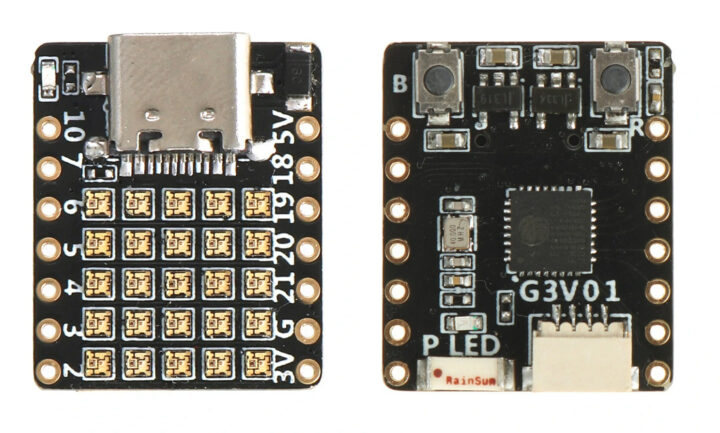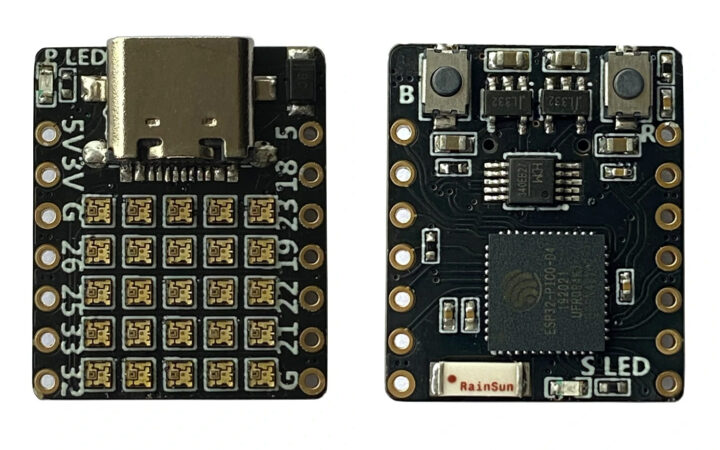In case you are in need of a tiny WiFI or Bluetooth-connected board with an RGB LED matrix, two have shown up on Banggood with basically the same 25 RGB LED design , except “C3FH4 RGB” board is based on ESP32-C3 RISC-V SoC, while the other, named “PICO D4 RGB“, features ESP32-Pico-D4 SiP (System-in-Package).
The boards are cute and the main purpose is probably for decoration/ornament, but I’d imagine if you purchase a few they could also be used as an experimentation/education platform for mesh networking, using the ESP Mesh Development Framework (ESP-MDF) for instance.

C3FH4 RGB / PICO D4 RGB board specifications:
- SoC/SiP
- C3FH4 RGB board – ESP32-C3FH4 SoC with RISC-V core @ 160 MHz, 4MB flash, 2.4GHz Wi-Fi, and Bluetooth 5 LE with Long-Range support
- PICO D4 RGB board – ESP32-PICO-D4 system-in-package with ESP32 dual-core Xtensa processor @ 240 MHz, 2.4GHz Wi-Fi and Bluetooth dual-mode, 4MB flash
- Ceramic antenna
- “Display” – 25x WS2812B-1515 RGB LEDs arranged in a 5×5 matrix
- USB – 1x USB Type-C port for power and programming via CH340E USB to TTL chip
- Expansion – 2x 7-pin headers with up to 11x GPIOs, 5V, 3.3V, GND
- Misc
- Enable and user buttons, power LED, and status/user LED
- C3FH4 RGB board only – Additional 4-pin header (not sure what it is for yet, power or expansion?)
- Dimensions – 21 x 18 mm
- Weight – About 2 grams

01Space provides Arduino code samples for both boards under separate Github repositories. Both repos have exactly the same samples “BlinkWithoutDelay”, “RGBWstrandtest”, and “strandtest_wheel”. It appears they only separated the repo because each board uses different GPIOs for the RGB LEDs (GPIO2 vs GPIO8), user button and LED. It makes me sad as they could have just defined a constant to compile for either platform instead.
I estimated I would need about 240 boards to decorate a door frame if I were to reserve 2cm for each board. That would be fun, but certainly not the most cost-effective way to decorate my door with some pretty lights :).
The ESP32-C3 board is the cheapest of the two as it is offered for $10.99 shipped on Banggood, while the ESP32-PICO-D4 version goes for $15.99 including shipping.

Jean-Luc started CNX Software in 2010 as a part-time endeavor, before quitting his job as a software engineering manager, and starting to write daily news, and reviews full time later in 2011.
Support CNX Software! Donate via cryptocurrencies, become a Patron on Patreon, or purchase goods on Amazon or Aliexpress




